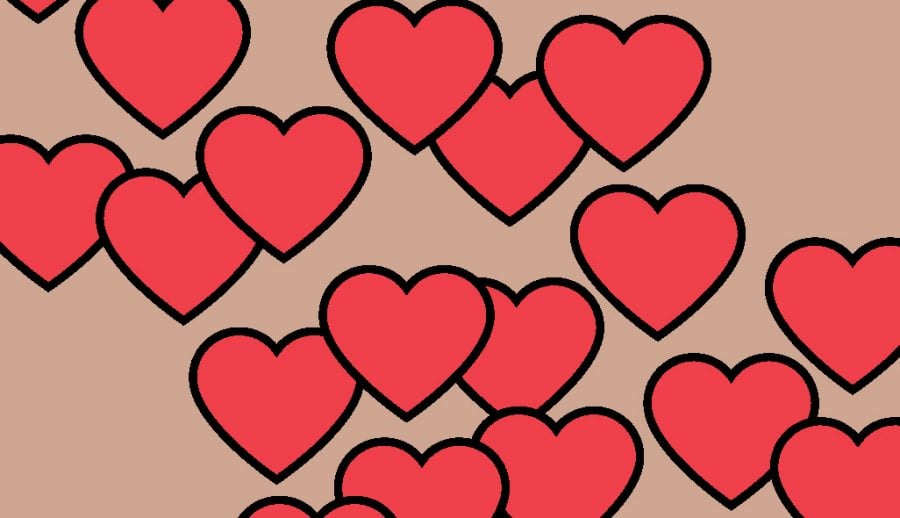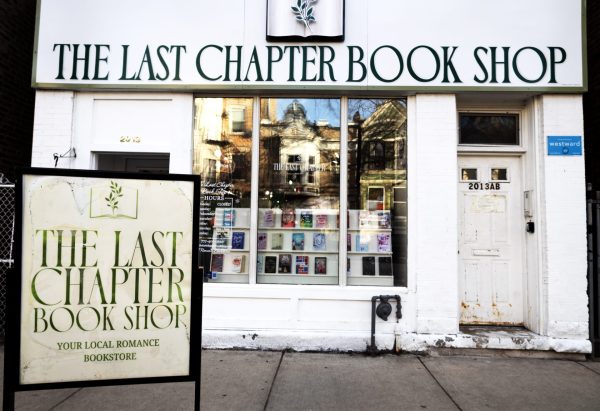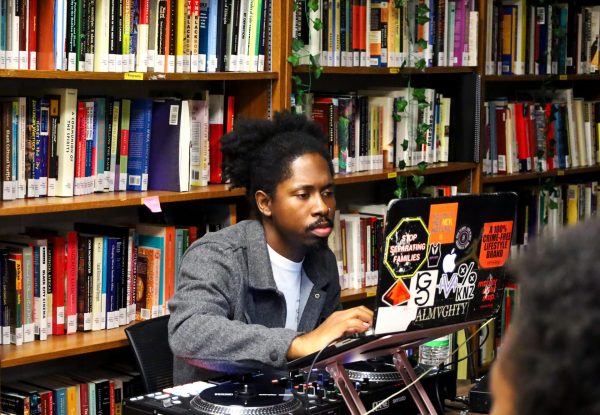The anatomy of the heart
Looking at the origins and meaning behind the heart symbol
When you walk into the State Street Barnes and Noble and head over to the greeting card section, a gaudy Valentine’s Day card sits right at eye-level. At the top of the card, a flashy sticker with the words “I Love You” demands attention in a cursive font. All around it, tiny fabric roses and small heart-shaped gem stickers are spattered over a glittery white floral design. Two elongated, wine-colored hearts hang from strings tied to the center of the card, and a single line of music from an unidentifiable song is screen printed along with a snake-scale pattern across the bottom.
It’s kind of an eyesore.
As you open the card, sparkles fall from the front revealing the message, “Love is a shared thought, a gentle touch, a sweet song. Love is us. Happy Valentine’s Day.”
How sweet.
“Valentines cards these days I just think are so cheesy,” Suzie Shin said. “They’re always crusted with glitter, and it’s just so excessive.”
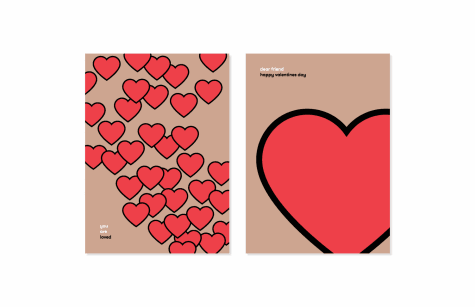
Shin, 22, is a designer, illustrator and a design apprentice at Thirst, a Chicago-based communication design practice. She recently made her own Valentine’s Day cards that she could easily send to friends and family rather than a significant other. The design is simple and the text is straightforward. She uses a consistent and solid-color heart shape along with the phrases “dear friend happy valentines day” and “you are loved.”
After looking up what other designers had done to create a bare-bones heart shape, she found that it’s really just two circles and a perfect square. “I like the simple geometry it took to make it,” Shin said.
Shin’s design was driven by a desire to create the kind of Valentine’s Day card that she would have wanted to buy herself, making it as simple as she was thinking in her head. “What I’m saying in the presentation is exactly how I would emote love in a card using a heart,” Shin said.
The simplicity of the heart symbol makes it ideal for reproduction. It’s easy to draw, visualize, cut out and sculpt. You can find it in clouds, and you can even make the shape with your hands. Our phones give us 18 different heart emojis to use, and we click on a heart every time we want to show that we “like” something on Instagram, Twitter and Facebook. Hearts are used on cards, clothes and logos, and they all communicate the same message: love.
The origin of the heart shape is unknown, though there are a few different theories. It could have come from the silphium seed pod, which was used as an ancient contraceptive and very much resembles the heart symbol we know today. It may have also been derived from the shape of breasts and butts. Maybe it was fashioned after ivy leaves. It might just be a bad attempt at drawing a real anatomical heart. But the association of the symbol with the concept of “love” didn’t happen until the 13th or 14th century. Before then, it was used purely for decorative purposes.
So how did this humble symbol become so synonymous with such a powerful emotion?
“We’re not born knowing what these things mean. We have to learn their association,” said Marissa Strassel, a professor in DePaul’s College of Computing and Digital Media.

(Rachel Fernandez | The DePaulia)
Strassel is currently teaching a semiotics class. “The way that I frame it is that students examine the tools and the structure we have for creating interpreting and understanding meaning in a variety of ways,” Strassel said.
Simply put, semiotics is the study of meaning-making. This field focuses mostly on signs and symbols and what they communicate to the outside world. We all understand that a red hand means “stop,” a skull and crossbones means “danger” and a heart symbol means “love.” Semiotics examines how these meanings came to be, and it can yield useful insights into the connotations of symbols like the heart.
Symbols are abstract representations that typically have meanings ascribed to them, and humans have formed these meanings and reinforced them over time until they became shared.
“A really good symbol should be simple, memorable and easily replicated,” Strassel said. Think: the retweet symbol. Or (hint hint) the heart.

“I think of it as a connection,” Blake Becker, 20, a student in Strassel’s semiotics class said. “From a symmetrical standpoint it is perfectly mirrored vertically, and I think that there’s a pair created from it from the two rounded sections meeting at the end. There has to be a connection, whether that be in life or in a relationship.”
“There’s something so elegant about simplicity that remains timeless,” Nate Azark said.
Azark, 39, is the founder and creative director of 12 Line Studio, a Chicago-based illustration and design company. The studio focuses on branding, and the heart symbol is definitely a useful tool in their arsenal. He designed a lockup for the food company Evol. that uses the heart shape to communicate the company cares about what they put in their food (plus, “Evol” is “Love” backwards).
“It sets you up for understanding whatever the artist or designer is trying to get across without having to use any words at all,” Azark said.
In his view, the universality of the heart symbol can be a canvas to convey many different meanings.
“Any embellishment to something that’s been simplified so much really makes an impactful statement, even with an understated shape like the heart,” Azark said. For instance, a black heart can signify evil, a heart of gold can signify kindness and a broken heart can signify, well, heartbreak.

Strassel agreed. “(The heart) is a really simple, memorable, replicable symbol,” she said. “It’s really fun because you can manipulate it in many different ways and it still has that same understanding. That’s really powerful.”
According to Strassel, one of the reasons the heart symbol is so versatile is that culture and context play big roles in its meanings. While the heart shape may seem to have the same meaning in Murfreesboro, Tenn. as in Kyoto, Japan, this is still only because of the cultures they exist within.
In her memoir “Without You, There is no Us,” writer Suki Kim chronicles her experience teaching English to the sons of North Korea’s elite. Strassel recently read the book and noted a fleeting passage on how the young North Korean boys Kim was teaching didn’t recognize the pink hearts that appeared when she opened up the Photo Booth computer program. Regardless of whether or not they had ever seen the shape before, the boys were living in an environment that did not condition them to ascribe a certain meaning to the heart symbol.
Hearts have made their mark on contemporary culture in the United States, and as Valentine’s Day approaches, hearts will undoubtedly continue to be plastered across cards and mugs and phone cases and notebooks and anything with a platform on which they can be displayed. We love to love and our use of the heart symbol will continue to show it.
“The heart isn’t going anywhere,” Azark said. “It’s here forever, and that’s due to the simplistic nature of it. It’s distilled down to its basics. You can’t really simplify a heart.”
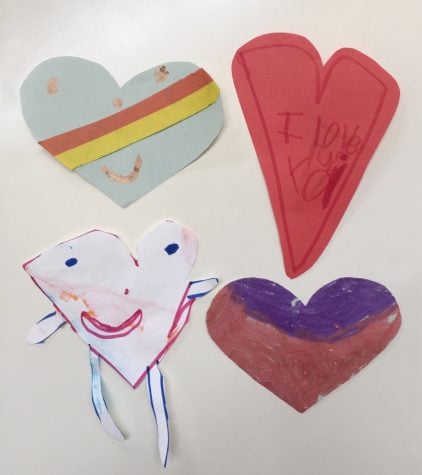
Two circles and a square. That’s all it is. With it, we can say so much: love, like, lust, affection, passion. A heart gets the message across.
“My daughter made a drawing a couple of weeks ago that had a whole series of hearts in different sizes and different shapes and different colors, and she gave it to me,” Strassel said. “It was great because it was a drawing that my daughter made, but it’s also her way of communicating that she loves me and thinks I’m great.”


